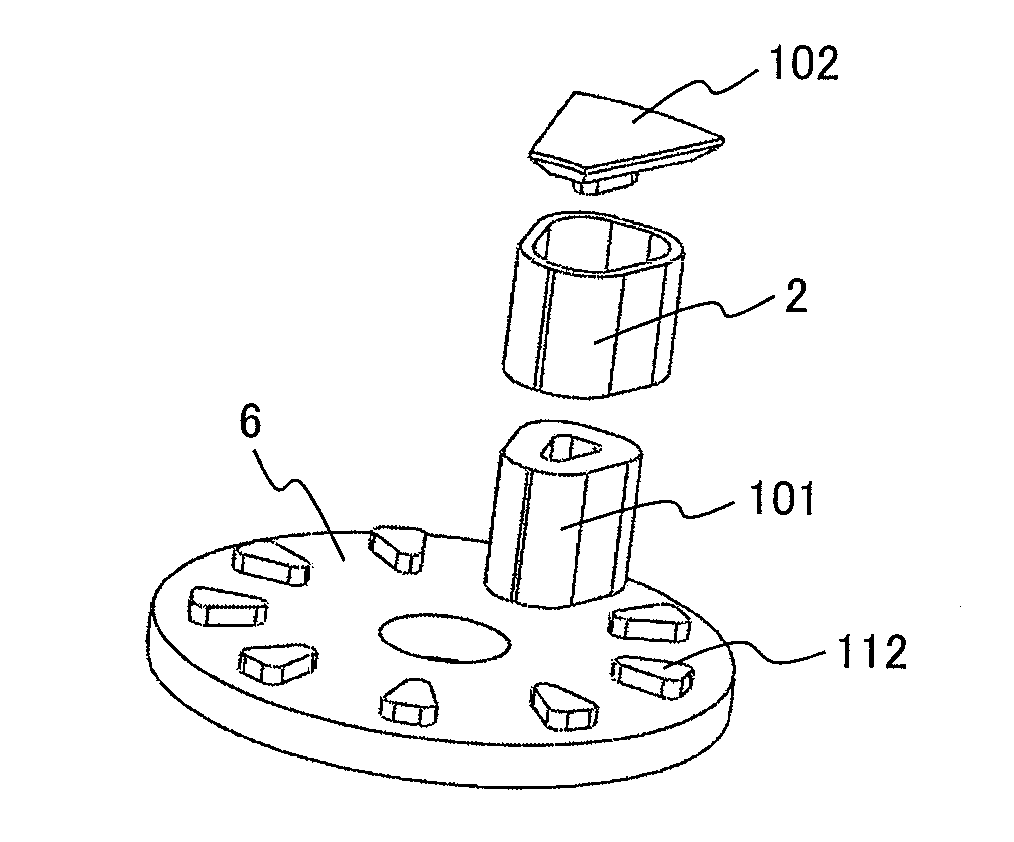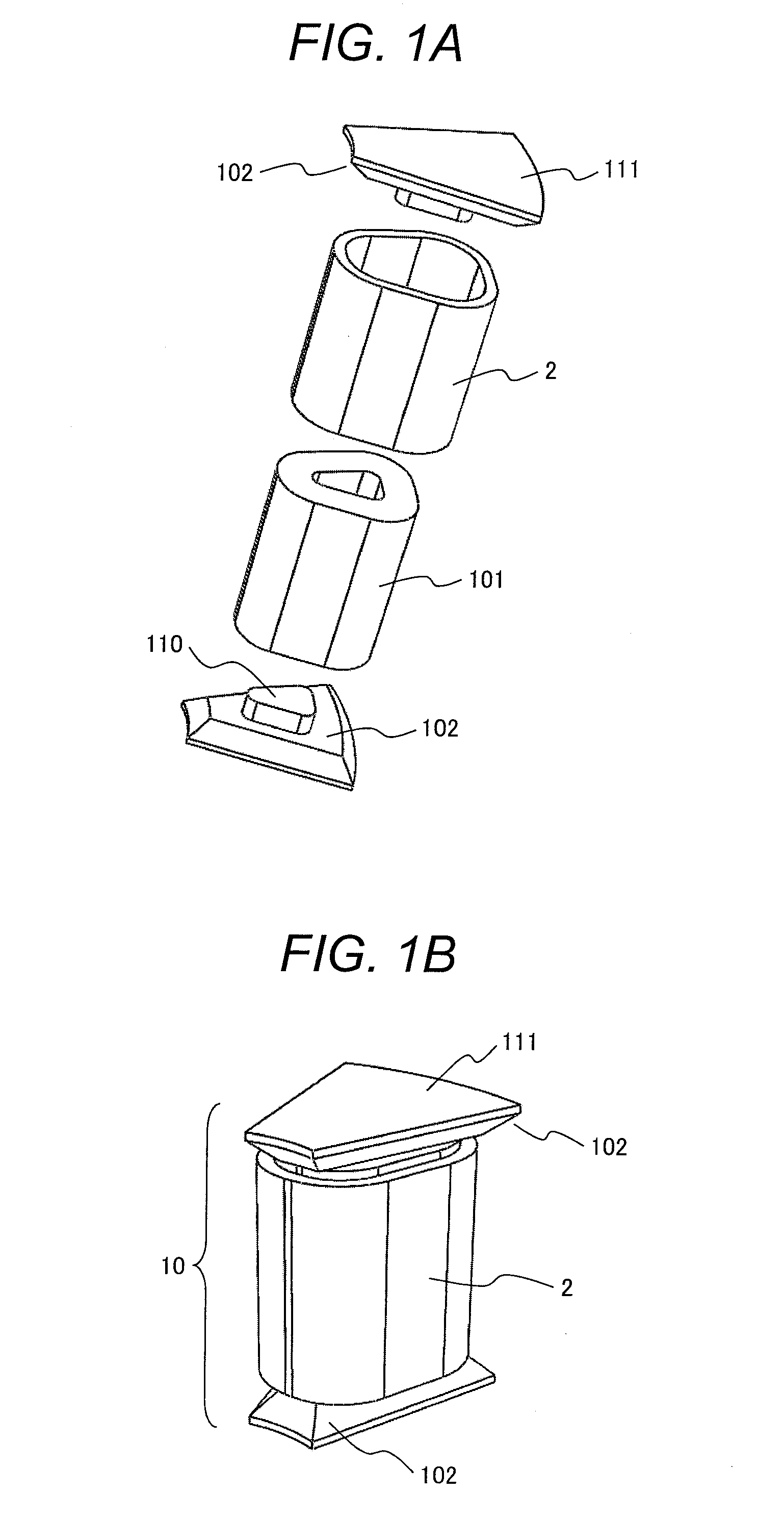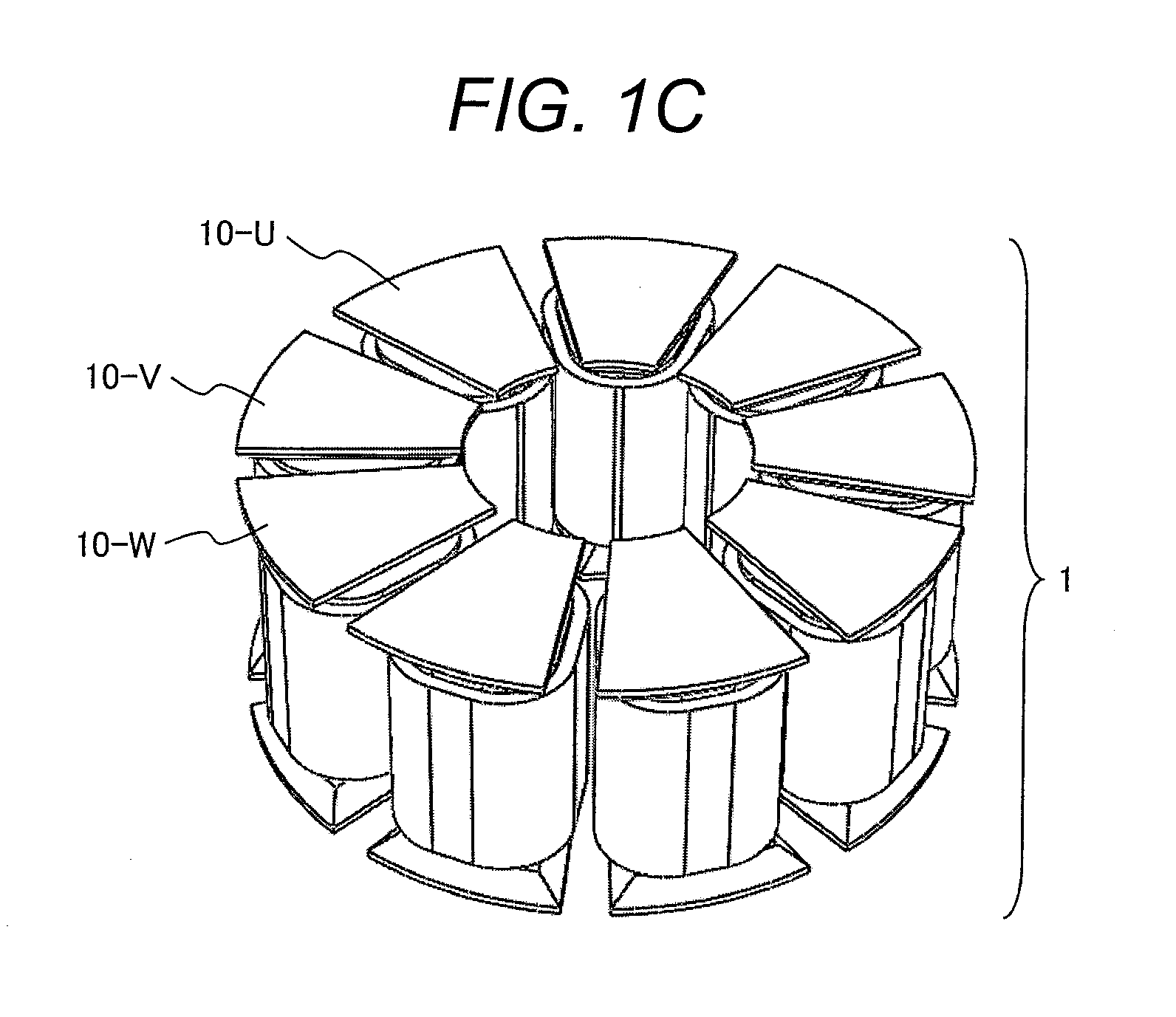Axial gap motor, compressor, motor system, and power generator
a gap motor and compressor technology, applied in the direction of dynamo-electric machines, electrical apparatus, magnetic circuit shapes/forms/construction, etc., can solve the problems of difficult to form amorphous alloys as iron cores, amorphous alloys can only be manufactured in the form, and more than half the amount of domestically used electrical power is consumed to drive rotary electric machines. , to achieve the effect of enhancing the efficiency of the motor, reducing the cost of the motor, and reducing the loss of iron
- Summary
- Abstract
- Description
- Claims
- Application Information
AI Technical Summary
Benefits of technology
Problems solved by technology
Method used
Image
Examples
first embodiment
An axial gap motor according to a first embodiment of the present invention will now be described with reference to FIGS. 1A to 4B.
FIGS. 1A and 1B are diagrams illustrating the configuration of a stator tooth of the axial gap motor according to the first embodiment of the present invention. The stator tooth 10 includes a stator core and a stator coil 2, which is disposed around the stator core. The stator core includes a stator tooth body 101 and a stator tooth end 102, and is prepared by using a wound amorphous core and a compact made of a powder magnetic core. In the present embodiment, the stator tooth end 102 is disposed on both ends of the stator tooth body 101. Further, the present embodiment uses a wound amorphous core for the stator tooth body 101. As the wound amorphous core has a constant cross-sectional shape in a plane perpendicular to the winding axis, the stator tooth body 101 also has a constant cross-sectional shape and area in a plane perpendicular to the axial dire...
second embodiment
The axial gap motor according to a second embodiment of the present invention will now be described with reference to FIGS. 5A and 5B.
In the first embodiment, it is assumed that the axial gap motor has a rotor on both ends. More specifically, the first embodiment uses a stator that is obtained by attaching a stator tooth end, which is made of a powder magnetic core compact, to both the upper and lower axial ends of a stator tooth body made of an amorphous foil strip winding. Further, the rotor is disposed on each axial end of the stator. In the second embodiment, it is assumed that the axial gap motor has a rotor on only one axial end of a stator as shown in FIGS. 5A and 5B.
Referring to FIG. 5A, a stator tooth is combined with a stator yoke (axial gap motor stator yoke) 6. The stator tooth includes the stator tooth body 101, one unit of the stator tooth end 102, and the stator coil 2, which have been described in connection with the first embodiment. The stator tooth body 101 is pro...
third embodiment
The axial gap motor according to a third embodiment of the present invention will now be described with reference to FIGS. 6 and 8.
In the foregoing embodiments, it is assumed that the stator core is configured by using a wound amorphous core for the stator tooth body. In the third embodiment, it is assumed that the stator core is configured by using a wound amorphous core for the stator tooth end. As mentioned earlier, the shape of the cross section of the wound amorphous core in a plane perpendicular to the winding axis remains same in any cross section. Therefore, a thin portion of the stator tooth end that has a constant cross-sectional shape in a plane perpendicular to the axial direction is configured by a narrow wound amorphous core, whereas the remaining portion of the stator tooth end (a portion of the stator tooth end that joins to the stator tooth body) and the stator tooth body are formed by a powder magnetic core.
An example shape of the stator core will now be described ...
PUM
 Login to View More
Login to View More Abstract
Description
Claims
Application Information
 Login to View More
Login to View More - R&D
- Intellectual Property
- Life Sciences
- Materials
- Tech Scout
- Unparalleled Data Quality
- Higher Quality Content
- 60% Fewer Hallucinations
Browse by: Latest US Patents, China's latest patents, Technical Efficacy Thesaurus, Application Domain, Technology Topic, Popular Technical Reports.
© 2025 PatSnap. All rights reserved.Legal|Privacy policy|Modern Slavery Act Transparency Statement|Sitemap|About US| Contact US: help@patsnap.com



